Feature Report | Taichung Station Then and Now: Will Darkness Give Way to Light?
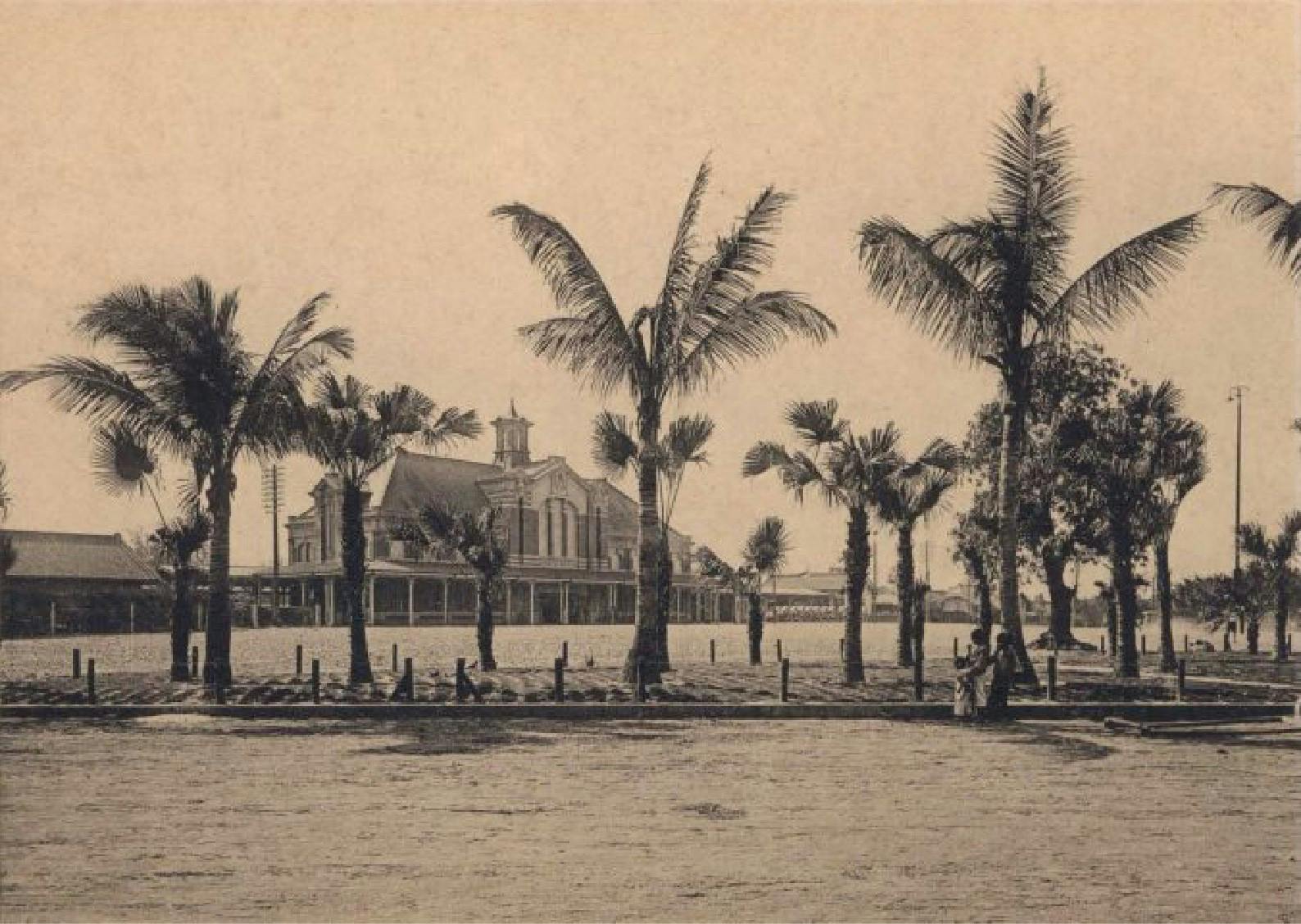
Feature Report: Taichung Station Then and Now: Will Darkness Give Way to Light?
French urban theorist Henri Lefebvre stated: ‘We possess a right to the city that cannot be interpreted merely as the right to visit it. Nor should it be conceived as a return to the traditional city. This can only be a transformative power, a right to metropolitan life, and this right can only be defined thus.’ Beyond sketching a more splendid vision, do citizens and the public possess the right to information and participation? After all, cities serve all people, and the pursuit of happiness remains the founding purpose of every city.
With the completion of the first phase of Taichung Station’s elevated railway in October, scenes of pedestrians and vehicles waiting at level crossings for trains to pass have become history. During this transitional period between the old and new stations, surrounding transport systems have become severely congested, with pedestrian flow disrupted. Many find themselves lost, seeking directions. As Taichung Station bids farewell to its past and embraces the future, will this period of traffic disruption give way to brighter days? This is a matter requiring our collective attention.
-
Past: Professor Hong Zhiwen on the Preservation Journey of Taichung Railway Station.
-
Future: A Comparison of Past and Present at Taichung Railway Station.
-
Foreign cases: The Utrecht Station Redevelopment Project in the Netherlands – CU2030
Future: A Comparison of Past and Present at Taichung Railway Station.
The former hub of the north-south transportation artery, the Longitudinal Railway: Taichung Station.
Construction of the North-South Railway commenced in 1899, divided into northern and southern sections. The southern segment began at Takao (present-day Kaohsiung), advancing northwards, while the northern section involved rerouting Liu Mingchuan’s railway south of Taipei. The following year (1900) saw the opening of the Takao-Tainan line, with the upgraded Taipei-Taoyuan section completed the year after (1901). By 1903, the northern section had reached Sanzhi (Sanyi), and by 1906, the southern section had advanced north to Huludun (Fengyuan). Only the most challenging ‘mountain line’ (present-day Old Mountain Line) remained, with full network completion delayed until 1908.
On 20 April 1908, the Taiwan Longitudinal Railway commenced full operations, spanning 408.5 kilometres. Half a year later, Taichung, designated as the railway’s central point, hosted the grand opening ceremony. A locomotive shed was constructed within the station precincts, and the Taipei Track Maintenance District’s Taichung Police Station was established on-site. In October of the same year, the opening ceremony took place at Taichung Park, attended by Prince Konoe, a member of the Japanese Imperial Family. The Lake Heart Pavilion was built specifically to celebrate the railway’s inauguration.
How to realise historical and cultural value when converting a Grade II historic site into a museum?
During the Qing dynasty, Taiwan’s capital was Tainan. After Japan’s occupation, the Governor-General’s Office was established in Taipei, making the Taichung Basin a new city the administration urgently sought to develop. Consequently, the Longitudinal Railway selected Taichung as its central station. With a population under 10,000 in 1905, a simple wooden station building was adopted. In 1910, Taichung implemented an urban plan, initiating the construction of grid-pattern roads and Western-style neighbourhoods around the station. The new red-brick Taichung Station, completed in 1917, is the present-day Taichung Railway Station. Designed by the Governor-General’s Office Construction Department, its architecture clearly drew inspiration from the grand arched windows of Tokyo Station’s red-brick structure completed three years prior (1914). This resulted in Taiwan’s most iconic railway station, now designated a National Second-Class Historic Site.
With the opening of the first phase of Taichung’s elevated railway, news that the historically significant old station building may be converted into a museum has sparked lively debate among cultural and historical circles. Before the Railway Bureau formally announces its next steps, we have compiled historical photographs of Taichung alongside the current state of the old station. We hope these vintage images may serve as reference material, helping to outline the contours of a museum rich in historical and cultural significance.
- Rain shelter
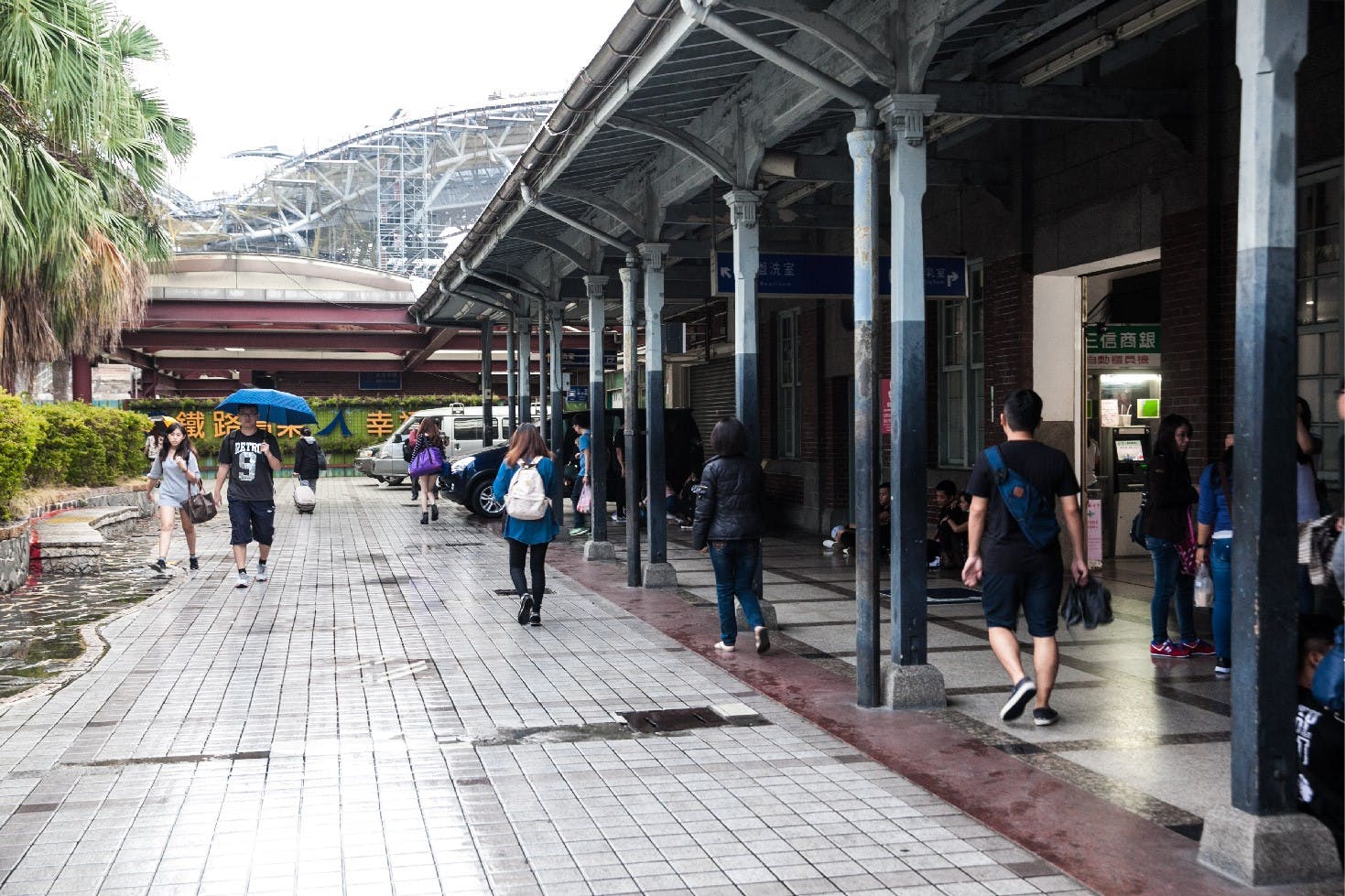 Rain shelter outside Taichung Station’s old building (photographed November 2016).
Photo credit:Jerry Kan
Rain shelter outside Taichung Station’s old building (photographed November 2016).
Photo credit:Jerry Kan
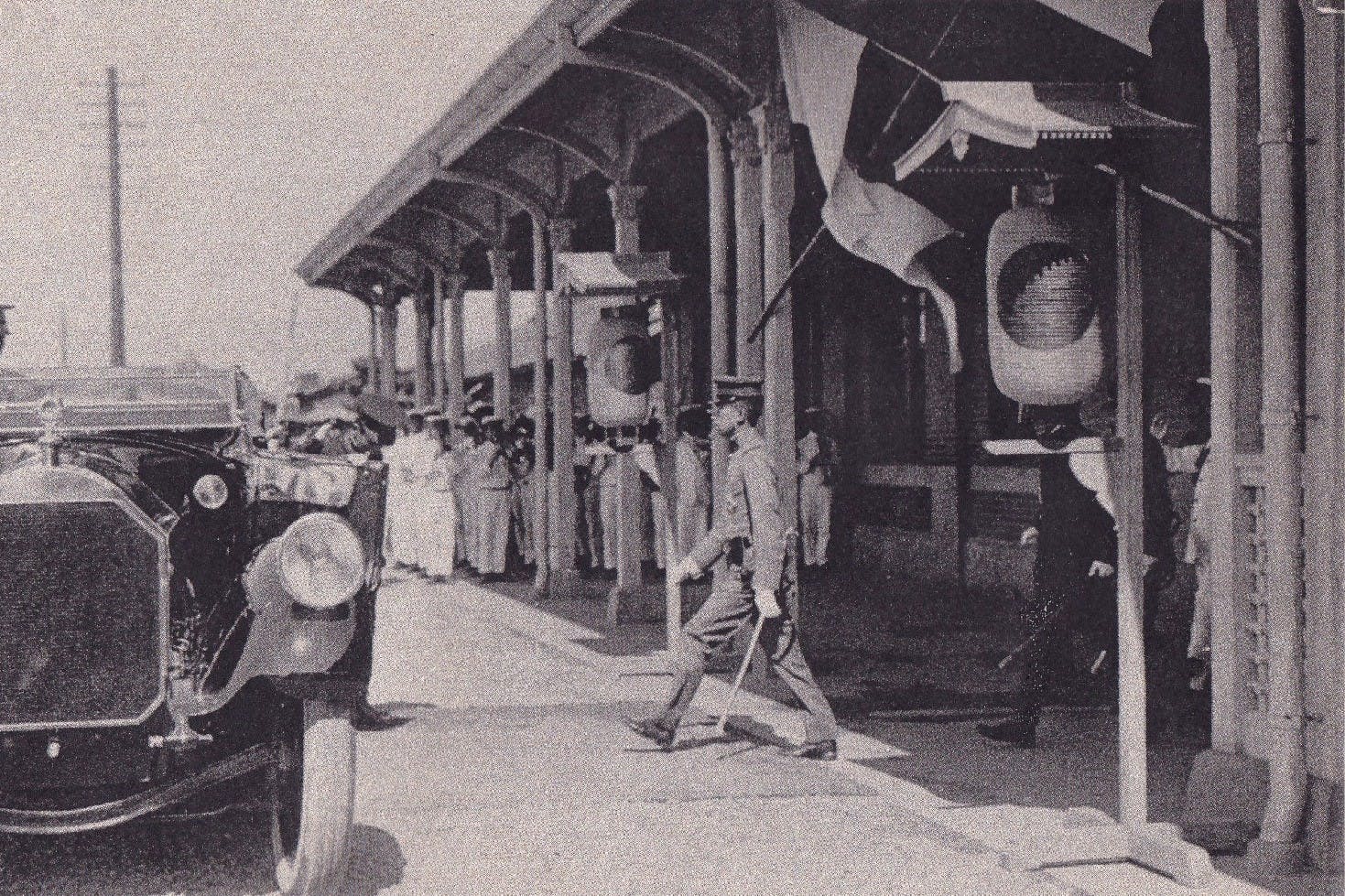 Wooden rain shelter outside Taichung Station during the Japanese colonial period.
Photo credit:Courtesy of Morning Star Publishing.
Wooden rain shelter outside Taichung Station during the Japanese colonial period.
Photo credit:Courtesy of Morning Star Publishing.
- The original wooden ticket counter (木製切符売り場) in the concourse centre was dismantled to accommodate additional ticket windows.
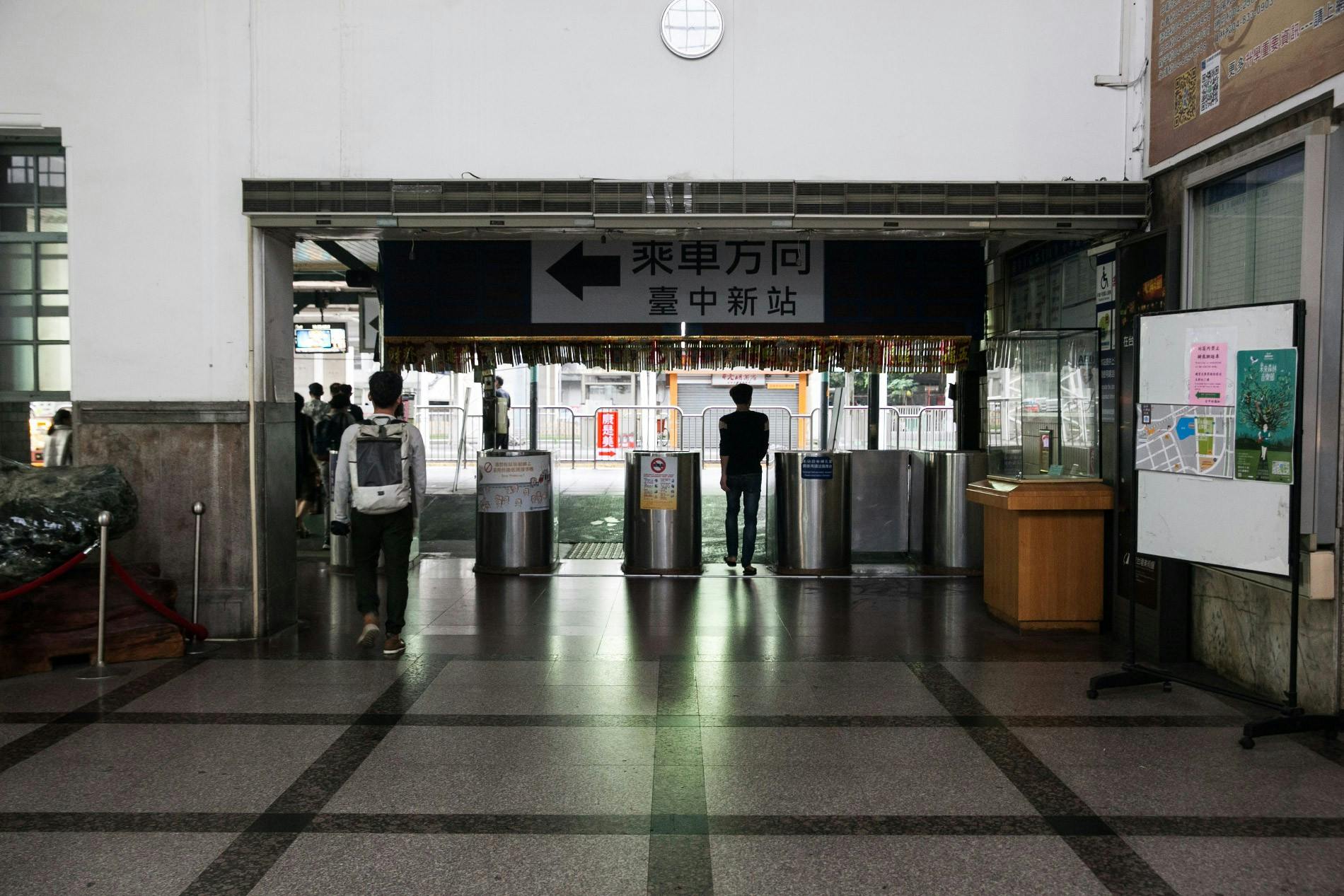 Ticket gate in the centre of Taichung Station’s old concourse. Photo credit:Jerry Kan
Ticket gate in the centre of Taichung Station’s old concourse. Photo credit:Jerry Kan
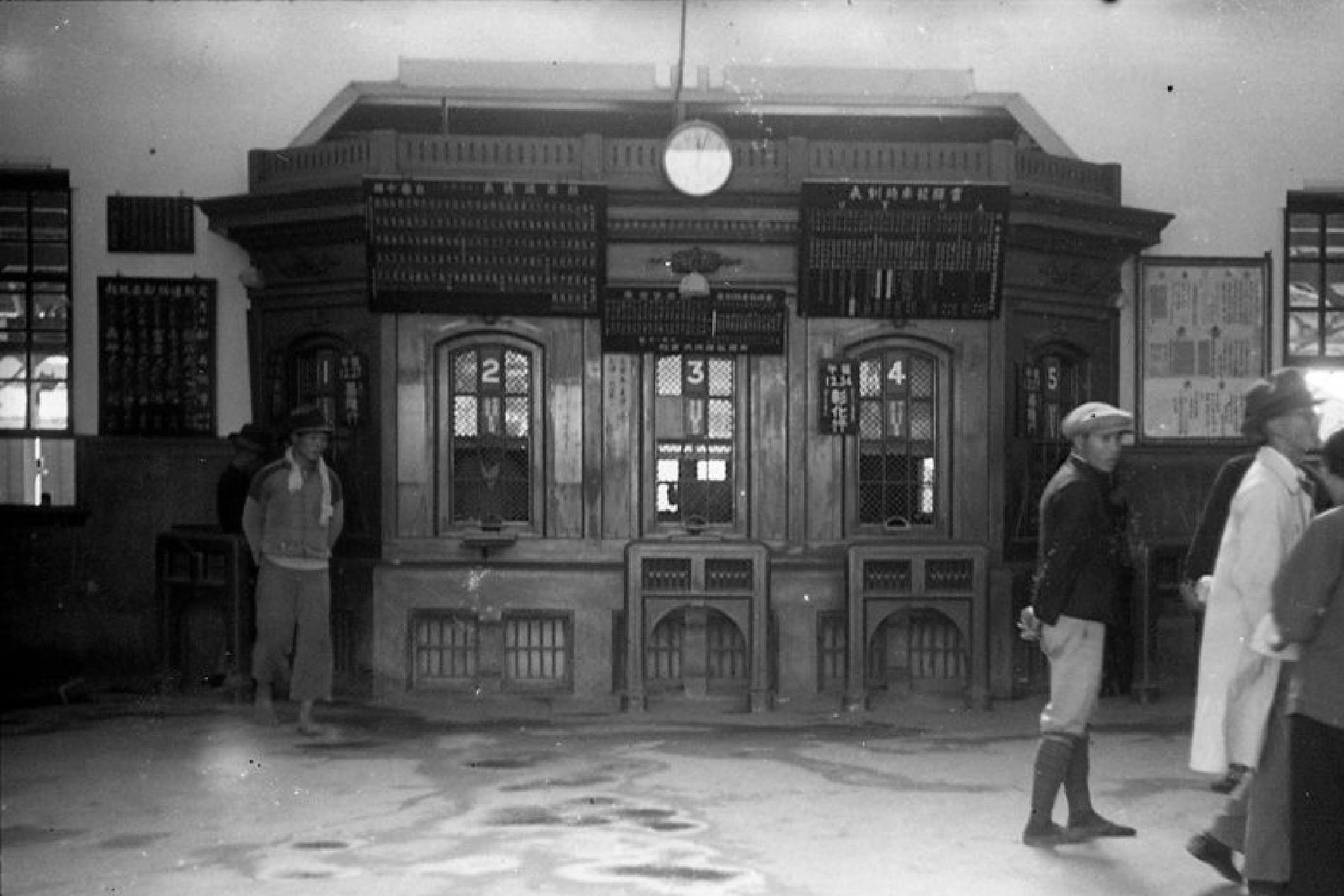 Exquisite wooden ticket counter in the station concourse during the 1940s.Photo credit:Summer Gate Photography Research Laboratory.
Exquisite wooden ticket counter in the station concourse during the 1940s.Photo credit:Summer Gate Photography Research Laboratory.
- Taichung Train Station sales counter.
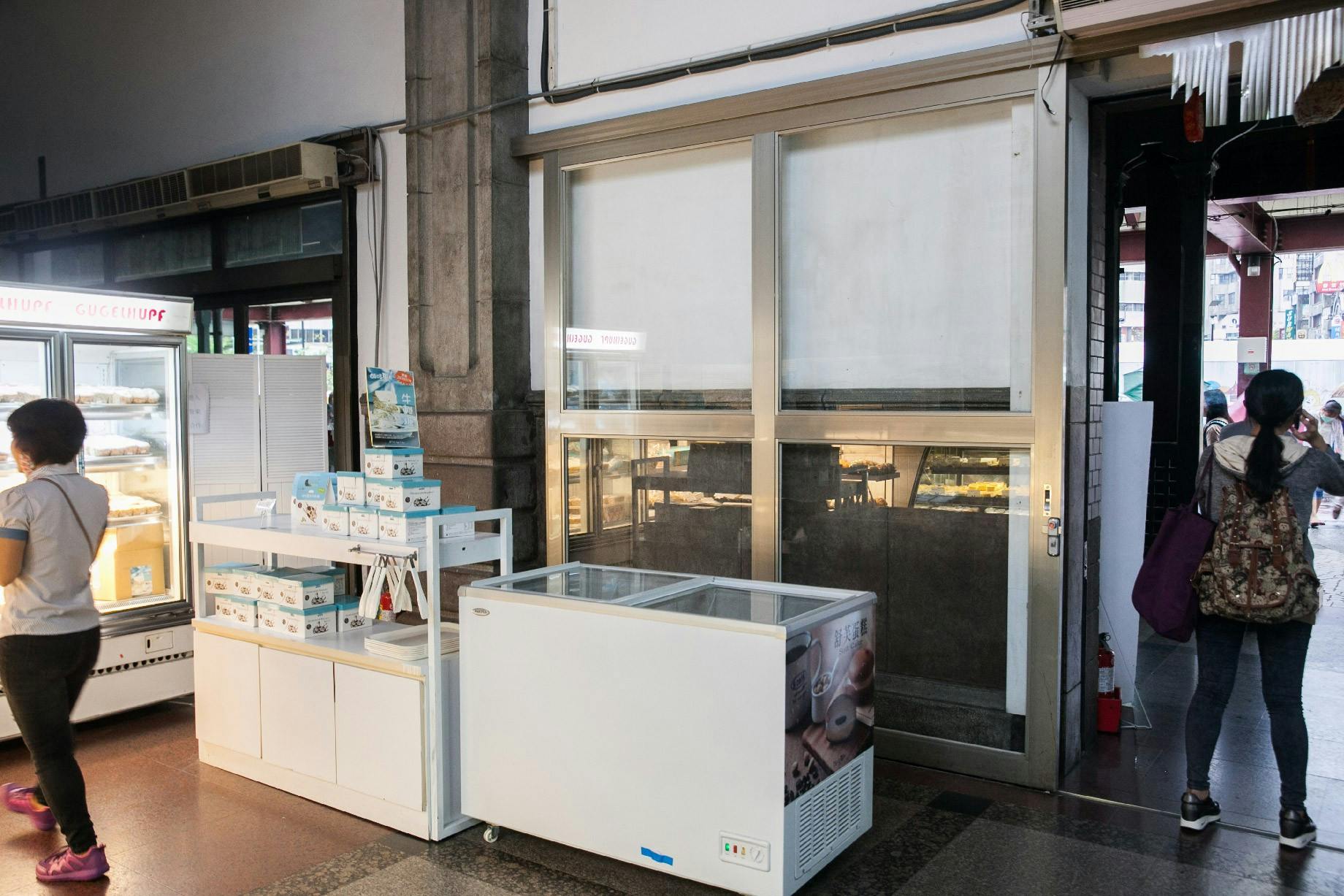 Current state of Taichung Train Station (November 2016).Photo credit:Jerry Kan.
Current state of Taichung Train Station (November 2016).Photo credit:Jerry Kan.
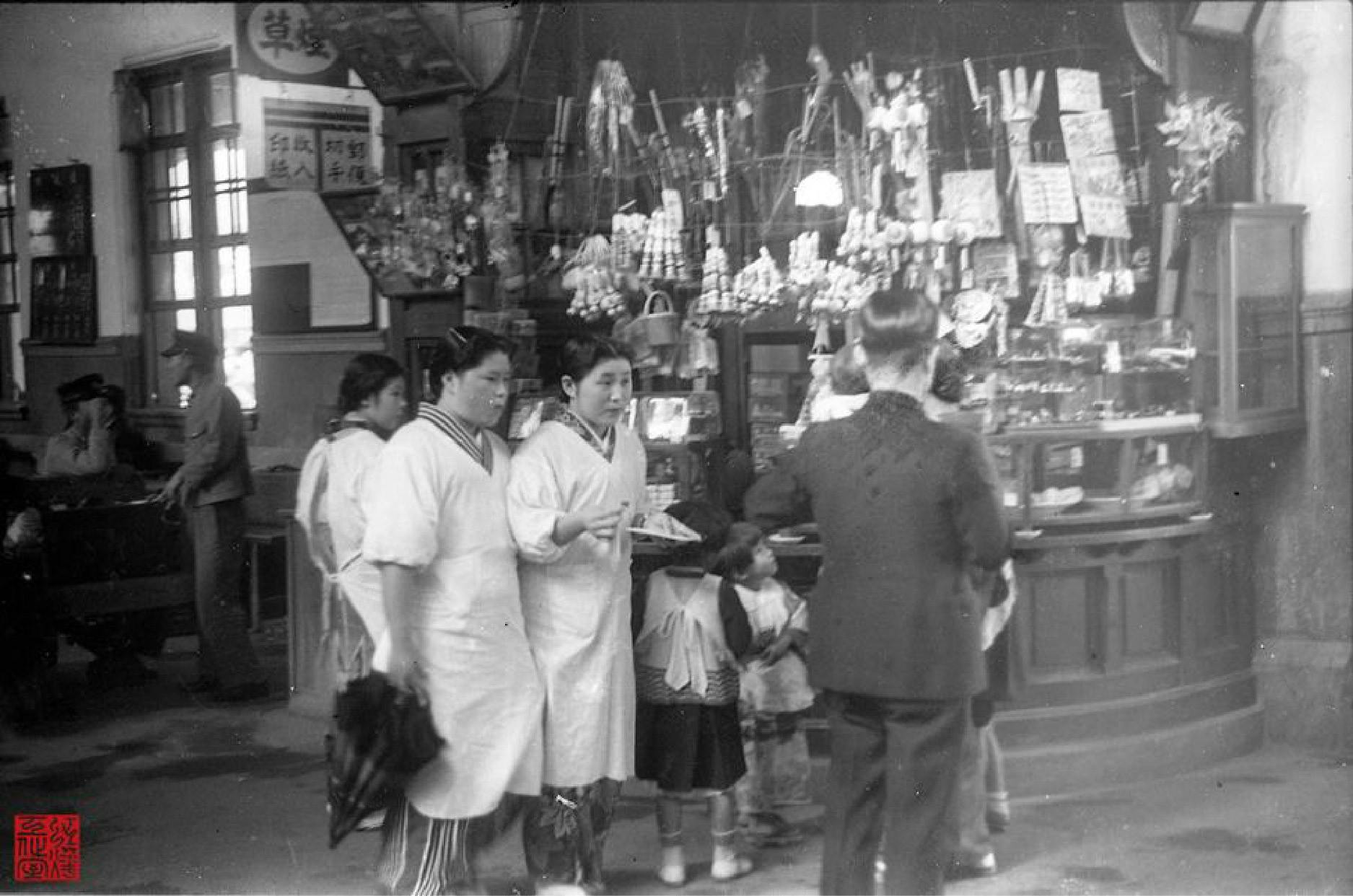 Taichung Train Station sales counter as captured by Huozeng Li in 1940.Photo credit:Xia Men Photography Research Studio.
Taichung Train Station sales counter as captured by Huozeng Li in 1940.Photo credit:Xia Men Photography Research Studio.
Zongkui Ling (凌宗魁), a researcher long dedicated to cultural preservation, shared historical photographs of Taichung Station on his personal Facebook page, discussing with netizens how the old station should be repurposed as a museum. He argued that if Taichung Station is confirmed for conversion into a museum, it should be approached with the mindset of a museum regarding exhibition, collection, and education. Even if the original design drawings cannot be found, numerous old photographs and similar case studies remain available for reference. Following the gradual withdrawal of retail outlets, all retrofitted air conditioning ducts and counters could be dismantled to restore the heritage site to its purest state, allowing subsequent consideration of its future content.
- Taichung Train Station.
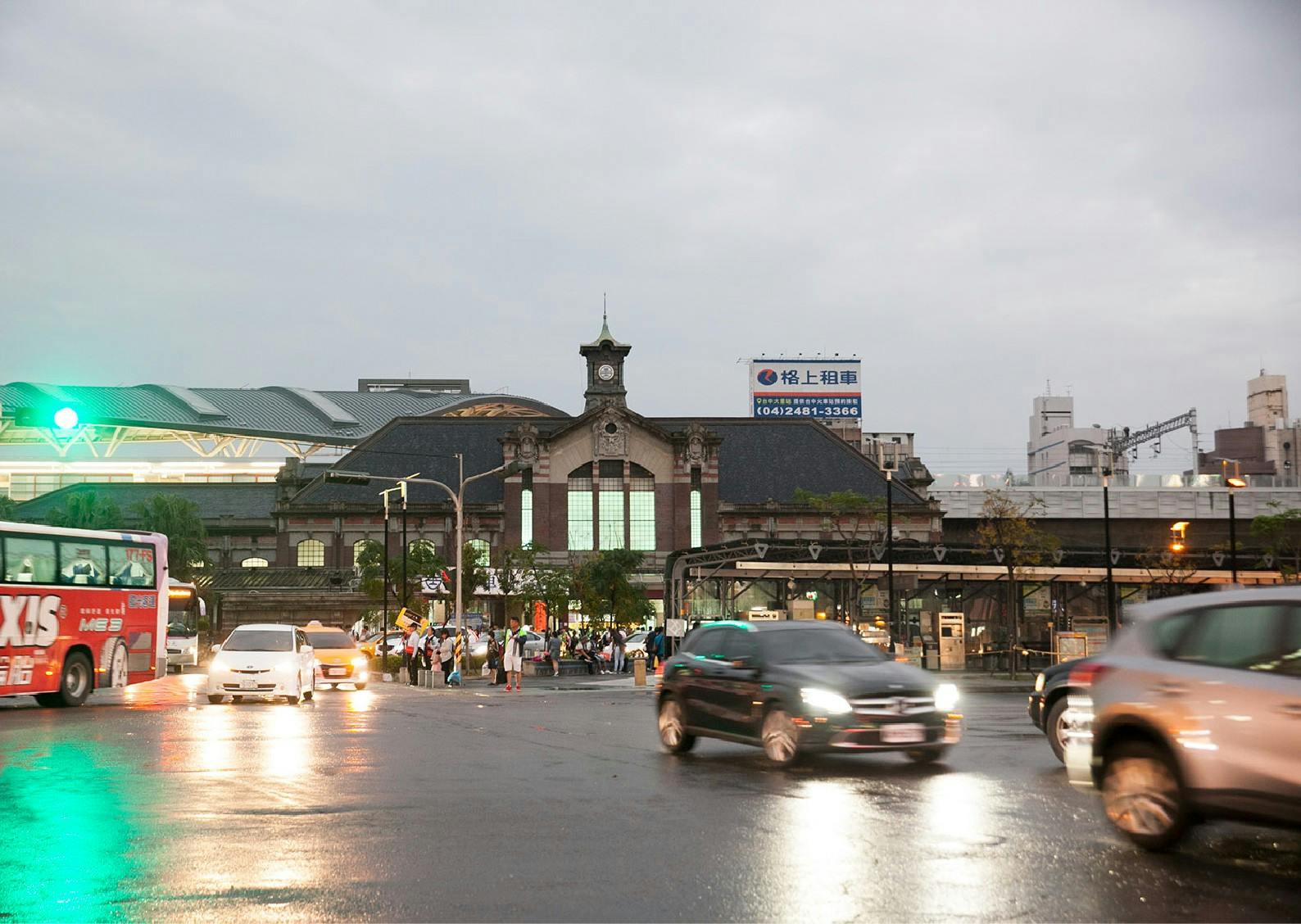 Taichung Train Station’s historic building and forecourt (November 2016), congested with traffic during the transition period between old and new stations. Photo credit:Jerry Kan.
Taichung Train Station’s historic building and forecourt (November 2016), congested with traffic during the transition period between old and new stations. Photo credit:Jerry Kan.
 The red-brick Taichung Train Station and forecourt during the Japanese colonial period. Photo credit:Courtesy of Morning Star Publishing.
The red-brick Taichung Train Station and forecourt during the Japanese colonial period. Photo credit:Courtesy of Morning Star Publishing.
- Text reference: Taiwan’s Railway History as Witnessed by Taichung Station and Lake Heart Pavilion
- Photographs in this article are published with permission from the Xia Men Photography Research Laboratory’s archives, taken by Li Huozeng in 1940.